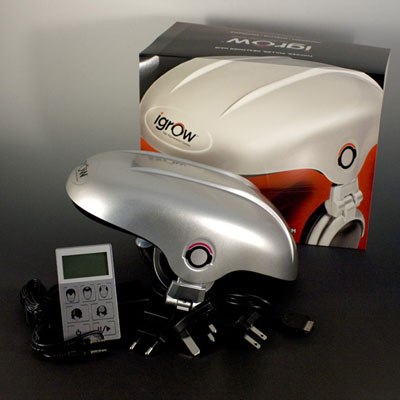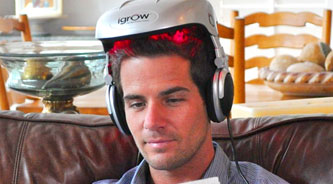Lasers are among the latest tools to help with hair loss. One such example is the iGrow Hair Growth System which is now on sale to the public with a promise of hair regrowth within nine months, but does the evidence really back up the claims?
 Hair loss can have a detrimental effect on an individual causing them embarrassment and low self-esteem. Hair is one of the first to be noticed on a person and is part of their identity and when hair loss starts many will look for ways in which to stop the hair loss and help with regrowth. Unfortunately for some hair loss is genetic and no matter how healthier diet or lifestyle they lead they will lose hair at some stage in their life.
Hair loss can have a detrimental effect on an individual causing them embarrassment and low self-esteem. Hair is one of the first to be noticed on a person and is part of their identity and when hair loss starts many will look for ways in which to stop the hair loss and help with regrowth. Unfortunately for some hair loss is genetic and no matter how healthier diet or lifestyle they lead they will lose hair at some stage in their life.
Manufacturers of laser devices for hair loss claim that the first signs of improvement can be seen within the first 6 to 8 weeks, and the full effects will be seen within 9 months. The iGrow device is in the form of a helmet with headphones attached and uses a low level laser therapy to help stimulate the hair follicles and the scalp. The helmet consists of 21 laser diodes and 30 LED lights and does come at a cost. These lights give a low energy laser light which penetrate the soft tissues of the scalp which is then thought to increase the action of adenosine triphosphate. ATP is a molecule that is thought to help with cell growth including hair.
The owners of this device claim a thicker fuller and healthier head of hair within a few weeks, however similar claims have been made for years by manufacturers of the more common laser comb and the results have never really stacked up. As of yet there is no official proof or medically approved verification that lasers can work at all.
That said, there is one laser product that has been approved by the FDA, known as the HairMax laser comb, and is normally used alongside other treatment options such as minoxidil and finasteride. The HairMax laser comb is a much smaller device that works in a similar way with the laser light penetrating the softest tissues of the scalp. This particular device is used three times a week for 10 minutes at a time and has had good reported results, however independent verification is hard to find, and it is difficult to say for sure how effective laser therapy has been when used in tandem with other treatments.
Low level red lasers (LL RL) help to stimulate the healthy chemical activity in the scalp which in turn can help reduce hair loss, but again there has been no proof that this works on its own. For many people that suffer from genetic hair loss this may well be worth a try for them. Any form of natural hair loss should always be looked at by an expert first as there are many causes to hair loss and the use of laser may not be an appropriate solution.

